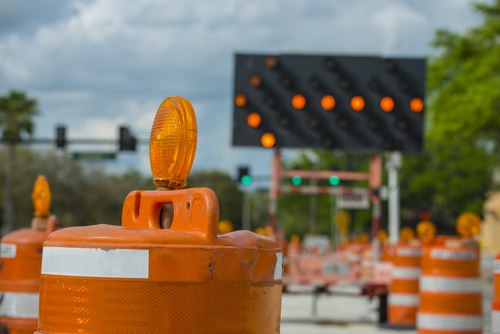
On Tuesday, the U.S. Department of Transportation’s Federal Highway Administration (FHWA) said it was committed to improving safety for road construction workers as part of this year’s National Work Zone Awareness Week (April 17-21).
The FHWA said the Bipartisan Infrastructure Law will allow it to invest in helping states, tribes, and local communities strengthen roadway safety.
“Every person in a work zone is somebody’s parent, child, sibling, loved one, or friend, and we want every single one of them to return home safely to their loved ones when their shift is done,” Federal Highway Administrator Shailen Bhatt said. “By working closely with our state and local partners, we are bringing the investments of the Bipartisan Infrastructure Law to bear in order to help save lives and strengthen the safety of those working in our nation’s construction zones.”
FHWA Executive Director Gloria Shepherd joined officials with the Missouri Department of Transportation Tuesday to remind drivers to watch out for highway workers as construction season begins. Shepherd said legislation can improve safety in work zones.
“We intend to use every program and funding option at our disposal under the Bipartisan Infrastructure Law to make our surface transportation safer, including in areas where repairs, maintenance, and construction are underway,” Shepherd said. “The safety of highway workers and others on roads, bridges, and highways across the country is FHWA’s number one priority.”
The USDOT National Roadway Safety Strategy outlines a comprehensive approach to reducing injury and death on roadways across the country. It emphasizes the need to make construction and maintenance zones safe for workers. That need is especially relevant as more roadways are built, maintained, and upgraded using funds from the Bipartisan Infrastructure Law, which provides funding for infrastructure improvements. The law also provides funding for programs to improve road safety where construction crews are at work. According to Shepherd’s office, the Safe Street and Roads for All Discretionary Grant program guarantees $5 billion for local governments, while the Highway Safety Improvement Program (HSIP) provides $15.6 billion in state government funding, both to make roads safer for all road users.
Other aspects of the infrastructure law include a Congestion Relief Program to be used for congestion management systems; a Data Integration Pilot program for work zone data collection; state apportioned funding that can be used for automated traffic enforcement systems in a work zone; and 100 percent funding of projects that use innovative project delivery that incorporate safety enhancements in work zones.